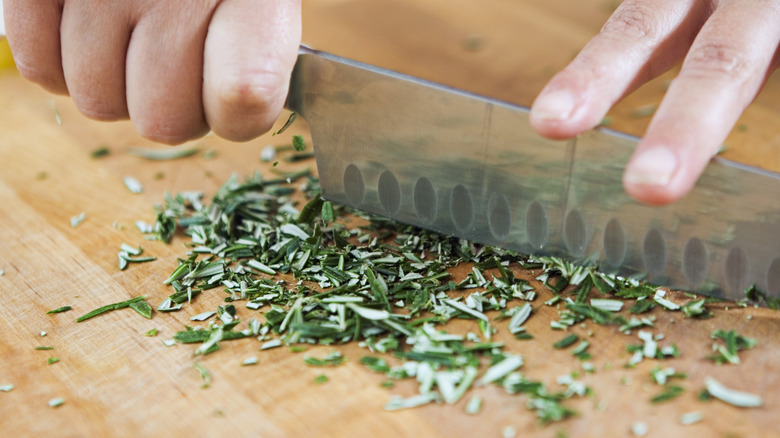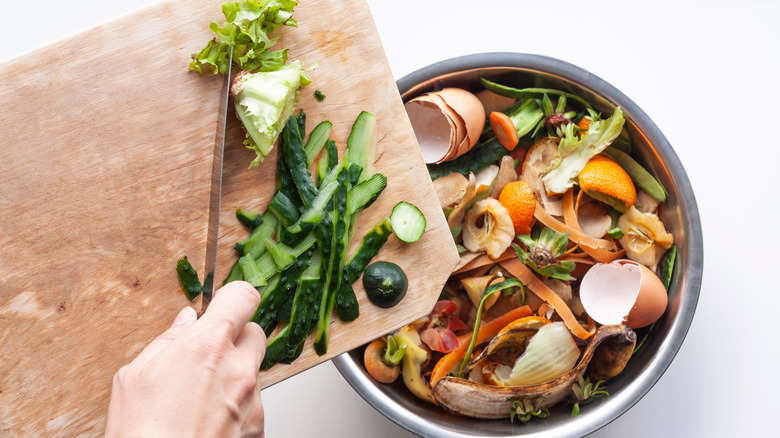Stop Scraping Your Knife On Cutting Boards (Even When Transferring Food)
Your cutting, chopping, dicing, and slicing — essentially your entire "mise en place" — is only as good as the knife you use to get it all done. And since mise en place is one of the most important parts of cooking a successful meal, one of the most important things you can have in your kitchen is a good knife.
Just one good knife can go a long way in making for a safer, more efficient, overall better cooking experience. A good knife can be a true gamechanger — something that can help you level up your skills in the kitchen while producing better results in your food. It's an invaluable tool that you may not realize you need until you have one.
To be a good knife, it's got to be a sharp knife. And to be a sharp knife, you've got to take care of it. That doesn't just mean using your knife correctly in the first place, but also avoiding the things that will damage it. One of those damaging things? Scraping.
Why scraping is a no-no for your knife
We all do it. For some reason, it tends to be an instinctual behavior while we prep and cook our food — we scrape bits and pieces to the side of the cutting board to make more room, or we slide our knife under the readied ingredients to transfer and plop them into the pan. It's an honest mistake, but it's a harmful one for your knife.
Why? All of that side-to-side motion will damage your knife's blade over time. That's because knives were designed to cut back and forth, and only back and forth. Using your knife on that perpendicular angle will misalign the edge of the blade, which ultimately results in the blade becoming dull. And remember: A good knife is a sharp knife, right?
If you can't resist the urge to scrape, try to get into the habit of using the back of your knife instead — the dull top of the blade rather than the sharp cutting edge. Or better yet, get yourself a bench scraper and scrape, scrape, scrape away. (That's what they're for, after all!)
Clean and care tips for your favorite kitchen knife
If you cook a lot at home, chances are you have a trusted go-to knife, whether it's a chef's knife, a utility knife, or maybe even a cleaver. Now you know not to scrape your knife, but what else should you be doing to keep your favorite knife in tip-top shape?
The first step in caring for your kitchen knife is to clean it correctly. That means no dishwasher — this is a delicate piece of metal that you'll need to wash by hand. Use some dish soap and warm water, and clean your knife with a sponge. The more often you wash your knife, the better, because the acid in the foods you're cutting can actually corrode the blade. A clean knife is a sharp knife!
Something else well worth adding to your kitchen tool repertoire: a honing rod. Contrary to popular belief, honing rods don't actually sharpen your knife, but their purpose is just as important. Remember how things like scraping will throw the blade out of alignment? A honing rod is what will fix that — it realigns and corrects the edge of the blade, straightening it back to where it should be. You can hone your knife before every use to help it perform its best.


